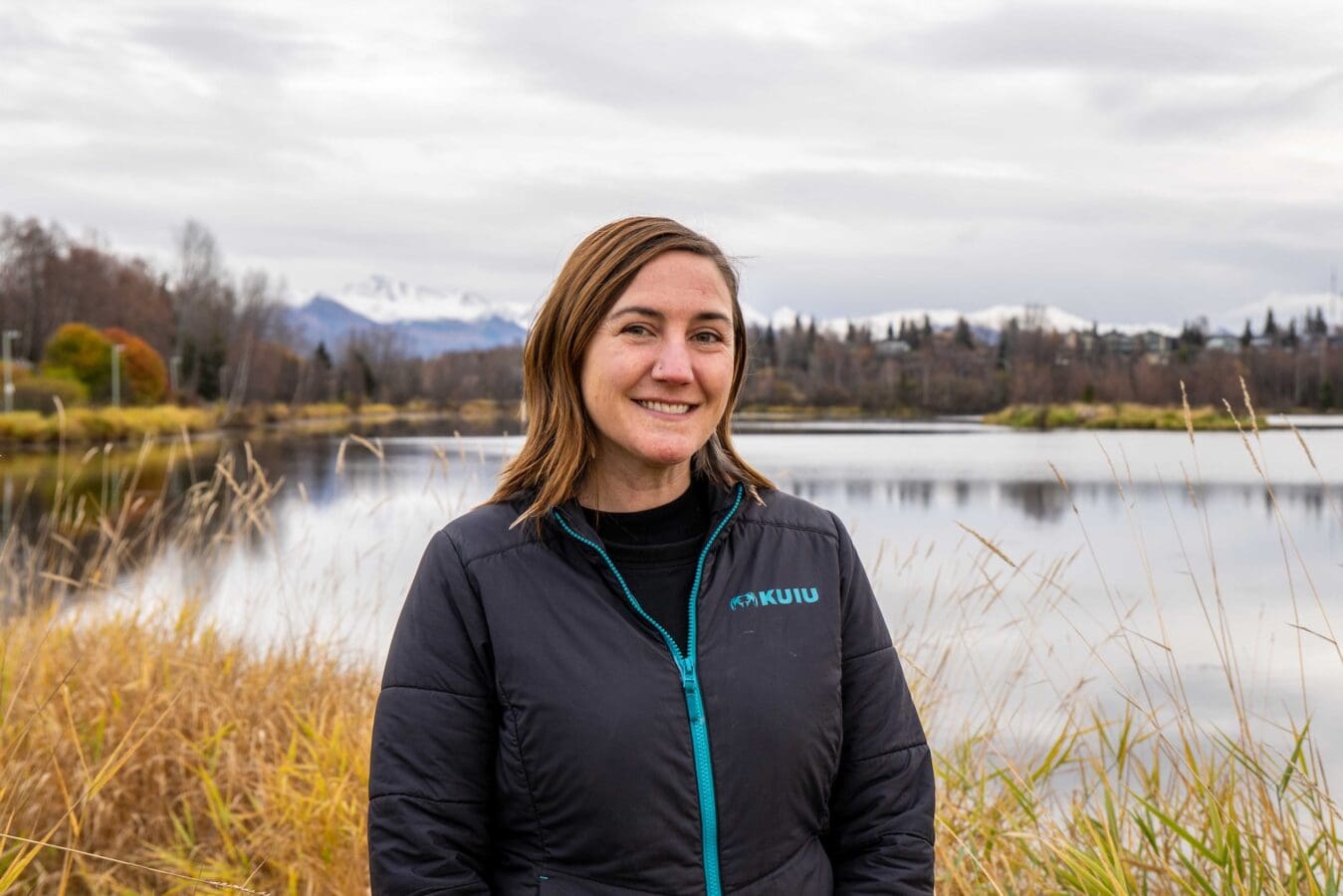Shaina Kilcoyne leads the Clean Energy Program at Alaska Venture Fund (AVF), where she advances resilient, affordable and locally-led energy projects. Shaina’s love for Alaska began during a two-week military training in 2005, when she helped build a road in Metlakatla in Southeast Alaska. Since moving to Alaska in 2011, Shaina has been helping build Alaska’s clean energy future. Her past work includes focusing on energy efficiency at the Renewable Energy Alaska Project (REAP) and leading the development and implementation of Anchorage’s first Climate Action Plan for the Municipality of Anchorage.
After serving as an energy committee aide in the Alaska State Legislature, where she helped the House identify and address the state’s energy opportunities and gaps, Shaina returned to AVF to support our clean energy goals. AVF’s Clean Energy Fellow Simran Bhathal sat down with Shaina to discuss what this work looks like today—from pursuing fair regulations for clean energy projects to helping rural communities access funding.
This interview has been edited for length and clarity.
Your career spans everything from the military to municipal leadership to statewide policy. What connects those experiences for you?
It always comes back to relationships. During my time with the Wisconsin Army National Guard Engineering Unit, I built strong bonds with my platoon while serving in Iraq—and I’ve carried that lesson forward. Everywhere I go, I focus on connecting with people.
That’s one thing I love about Alaska: it is so interconnected. If I mention I’m working on energy issues in Kotzebue, someone will say, “Oh you have to meet Tom,” or if I’m heading to Kongiganak, someone will connect me to Rod. Our small population fosters tight-knit communities where passionate experts are also our neighbors and friends.
What gives you hope about Alaska’s energy future?
It’s a tough time nationally for clean energy, and politics can strain relationships, but Alaskans are practical and deeply connected to place. We share a commitment to ensuring future generations can thrive here. If we can approach policy from this shared sense of stewardship and connection, I think Alaskans can show that a different path forward is possible, one that builds an energy future that’s both resilient and rooted in collaboration and Alaskan values. That keeps me motivated.
Can you share a specific example of a community or project where AVF’s support made a clear difference?
I’ve always admired Alaska Venture Fund’s creative, community-first approach. One example that stands out is our work with the Yup’ik village of Chefornak on the Bering Sea. They had secured a federal reimbursable grant to build a wind-powered microgrid with battery storage—a huge step toward energy independence. The problem was that they didn’t have the cash on hand to cover the upfront costs of purchasing and shipping the equipment.
Using philanthropic funds, AVF was able to offer a simple, zero-interest cash advance of $200,000 so the project could move forward. Once Chefornak was reimbursed, they repaid us, and we were able to use those same funds to help other communities in similar situations. It was such a great example of how a small, flexible intervention can have a big ripple effect. I’m really proud that we are able to provide that kind of nimble support—finding creative ways to remove barriers and bridge gaps. AVF’s close relationships with donors and communities enable us to be responsive to local needs and to take on projects no one else can.
How are organizations like Alaska Venture Fund and our partners well-positioned to support a clean energy future in Alaska?
I’ve been really fortunate to have experiences that deepened my understanding of Alaska’s complex and dynamic energy landscape. I’m excited to take that perspective and, together with our team and partners, to look holistically at our energy systems and reimagine what’s possible for our state. We’re connecting with communities, utilities, regional operators and others to understand what is working and where more support is needed.
There are setbacks, like the rollback of federal clean energy incentives, but globally, clean energy isn’t slowing down. There’s so much we can do right now to reduce barriers to hydro, geothermal, wind, solar, kinetic and storage integration—and to prepare Alaska for the opportunities ahead.
What is next for the clean energy program—what opportunities are you preparing for?
It’s been challenging to watch the clean energy landscape shift at the federal level, especially knowing how much untapped potential Alaska has. We have incredible clean energy resources that could strengthen our energy independence and make power more affordable for communities across the state. And the support is there—more than 80% of Alaskans want to see renewable energy infrastructure built to diversify and grow our economy.
Right now, we are focused on tackling the structural barriers that make it harder for renewable energy projects in Alaska to move forward; whether those are regulatory, permitting or simply part of operating in a state built around oil and gas. Our goal is to ensure Alaska keeps moving forward on energy: diversifying its generation, strengthening its infrastructure and positioning itself to take full advantage of the next wave of clean energy opportunities.
I’m deeply grateful to work with such an incredible team and network of people who share this vision. Together, we can help Alaska reimagine what it means to be an energy state and build a future that’s resilient, innovative and uniquely ours.
Written by Simran Bhathal, Climate and Energy Fellow
Photo by Ryan Morse
Published: October 2025
